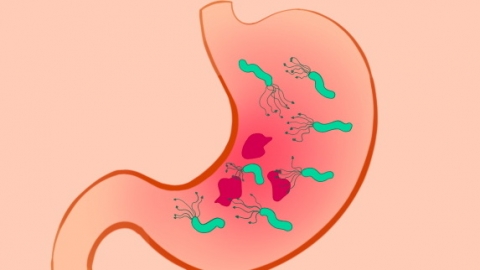What are the tests for Helicobacter pylori?
Generally, Helicobacter pylori (H. pylori) testing mainly includes the carbon-13 urea breath test, carbon-14 urea breath test, gastroscopy, stool antigen test, and serum antibody test. Each method has its own characteristics and can be selected according to individual needs. Detailed analysis is as follows:

1. Carbon-13 Urea Breath Test: After fasting for 4–6 hours, the patient ingests carbon-13-labeled urea reagent, sits quietly for 15–30 minutes, and then exhales into a collection bag for analysis. This method is non-invasive, radiation-free, and highly accurate. It is suitable for children and pregnant women. Antibiotics, proton pump inhibitors, and other interfering medications should be discontinued 1–2 weeks before the test.
2. Carbon-14 Urea Breath Test: The principle is similar to that of the carbon-13 test. The patient ingests carbon-14-labeled urea reagent and then exhales for analysis. It is simple to perform, requires minimal time, and is highly accurate. However, it involves minimal radiation exposure and is contraindicated for pregnant women, nursing mothers, and children. Interfering medications should be discontinued before testing.
3. Gastroscopy: During gastroscopy, small tissue samples are taken from the gastric mucosa and placed into a reagent tube; a color change indicates possible infection. This method can simultaneously evaluate for gastritis and gastric ulcers. However, it is an invasive procedure requiring fasting before and after the examination. Some individuals may experience nausea or abdominal distension during or after the procedure.
4. Stool Antigen Test: A small stool sample is collected and tested for H. pylori antigens using a test kit. This method is non-invasive and does not require fasting, making it suitable for infants, young children, or elderly individuals. The sample must be protected from contamination, and instructions should be followed carefully to ensure accurate results.
5. Serum Antibody Test: This test involves drawing venous blood to detect H. pylori antibodies. Fasting is not required, and results are typically available quickly. However, it can only indicate whether a person has ever been infected and cannot distinguish between past and current infection. It is suitable for initial screening but not for confirming active infection.
Before testing, it is important to inform the physician about medication history and underlying medical conditions to help determine the most appropriate testing method. If test results are abnormal, treatment should follow medical advice. In daily life, attention should be paid to food hygiene, and a separate dining system should be practiced to reduce cross-infection. Maintaining regular作息 (作息 should be translated as "作息" here, but since it's unclear in context, it may be best to use "lifestyle habits" or "daily routines") routines helps support gastric health.






